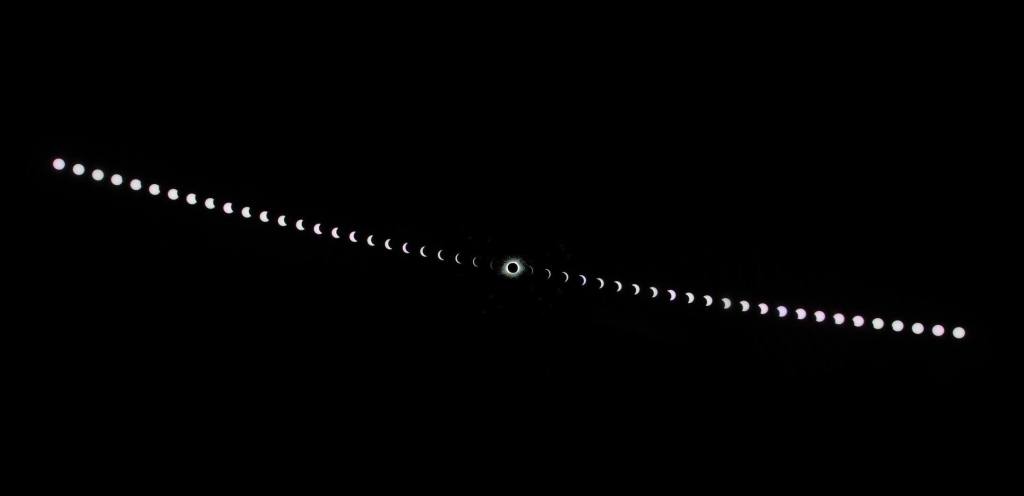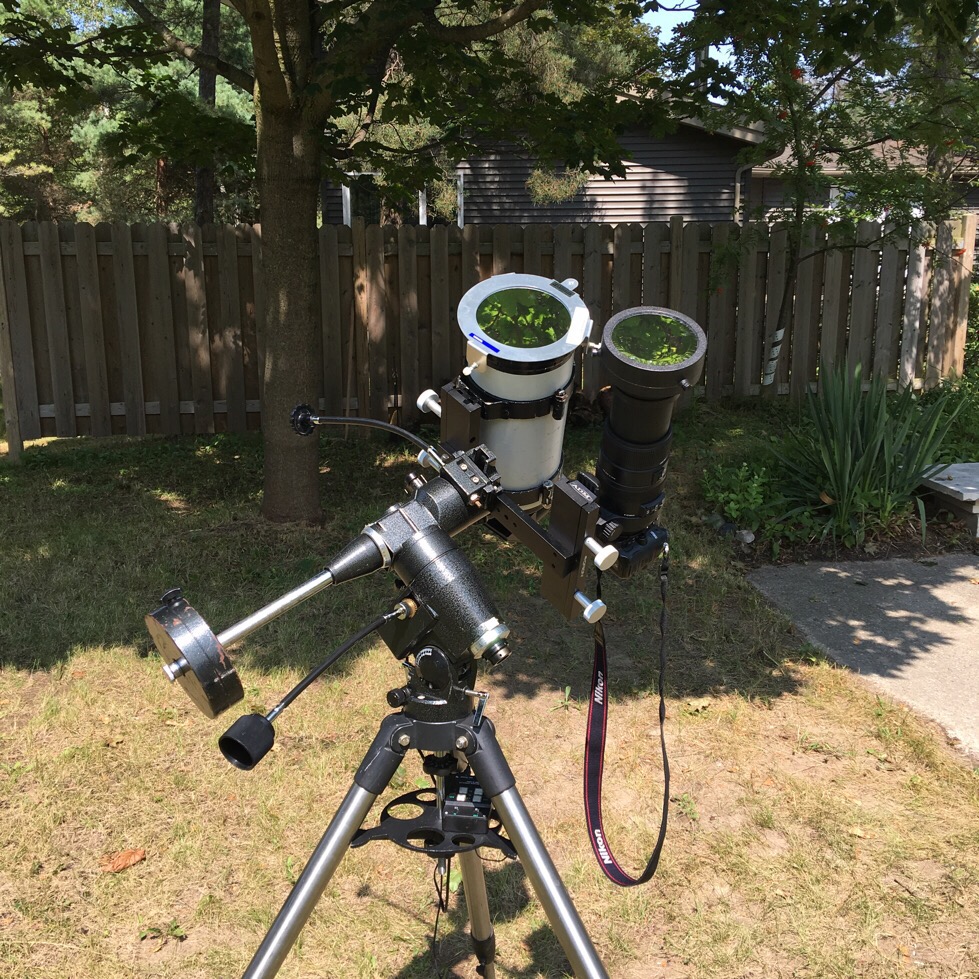
The April 8, 2024 total solar eclipse presents a once-in-a-lifetime opportunity for amateur astronomers in Canada to witness an extraordinary celestial event. By planning ahead, selecting the right equipment, following safety guidelines, and keeping an eye on weather conditions, you can maximize your chances of experiencing this breathtaking phenomenon. Remember that the memories and awe-inspiring moments you’ll capture during the eclipse will be cherished for years to come.
This blog post gives you general suggestions about viewing or photographing the eclipse, based on my personal experiences with the August 2017 total solar eclipse that I saw in Missouri.
1. Where Will the Eclipse Be Visible?
The April 8, 2024 total solar eclipse will be visible across a large portion of North America, offering Canadians an incredible opportunity to witness this phenomenon. The path of totality—the region where the sun is completely covered by the moon—will stretch across several provinces, allowing observers to experience the eclipse in its full glory. In Canada, the path of totality will traverse regions including Newfoundland and Labrador, Prince Edward Island, Nova Scotia, New Brunswick, southern Quebec, southern Ontario.
Totality – the period when the sun is completely blocked by the moon – varies from place to place. It will cover a narrow band of about 160 km across. The differences can be stark. Totality will not be visible in downtown Toronto, but will be in Hamilton. Even if you are not in the path of totality the sight of the moon obscuring the disk of the sun can be very dramatic.
Here’s a good guide for the details on-line: https://eclipse.aas.org/eclipse-america-2024
2. Recommended Equipment

To fully appreciate the grandeur of a total solar eclipse, it’s crucial to have the right equipment on hand. While a total solar eclipse is a mesmerizing sight to behold with the unaided eye, using proper eye protection is essential to avoid permanent eye damage. A pair of certified solar viewing glasses or eclipse glasses are an absolute necessity during all stages of the eclipse, except for the brief period of totality when the sun is completely covered.
For those looking to capture the eclipse’s stunning moments, a digital camera or smartphone can be used to take photographs, but it’s important to use appropriate solar filters to prevent damage to the camera’s sensor. Solar filters designed for cameras or telescopes can help capture the intricate details of the eclipse’s corona.
If you’re an amateur astronomer with access to telescopes, consider using a solar telescope or a telescope equipped with a solar filter. These devices allow you to observe the eclipse in even greater detail, revealing sunspots, prominences, and the solar corona during totality.
There are also some very simple ideas that can make for a fun viewing experience. These include pinhole “cameras” that project an image of the sun onto a white panel or card from a small hole in a solid sheet.
3. Viewing in Safety
Safety should always be a top priority when observing a solar eclipse. Even a partially eclipsed sun can cause permanent damage to your eyes if proper precautions are not taken. Follow these safety guidelines:
Use Certified Solar Viewing Glasses: Regular sunglasses, no matter how dark, are not sufficient for observing the sun. Only use certified solar viewing glasses or eclipse glasses that meet the ISO 12312-2 international safety standard. Check for any damage or scratches on the glasses before use.
Inspect Your Equipment: Ensure that any equipment you use to observe the eclipse has the appropriate solar filters in place. Telescopes, binoculars, and cameras all require specialized filters to prevent harmful sunlight from damaging your eyes or equipment.
Monitor Children: If you’re observing the eclipse with children, make sure they also have proper eye protection and are aware of the importance of not looking directly at the sun without it.
4. Weather Considerations
While regions of Canada offer prime viewing opportunities for the April 8, 2024 total solar eclipse, weather conditions can play a significant role in determining whether you’ll be able to witness the event. It’s crucial to keep an eye on weather forecasts in the days leading up to the eclipse and to have a backup plan in case the weather takes an unfavorable turn. As the eclipse is taking place in early spring, for example, the chance that it will be obscured by cloud in Ontario runs about 50%.
If you’re planning to travel to a specific location to view the eclipse, consider selecting a spot with a history of clear skies during the month of April. Coastal areas may be prone to fog or marine layer clouds, so it’s wise to research local climate patterns before finalizing your viewing location.
5. Potential Challenges
While parts of Canada are fortunate to be within the path of totality for the 2024 solar eclipse, there are a few challenges to keep in mind. The farther you are away from the path of greatest totality, the shorter the duration of totality will be. Be prepared for a potentially brief but incredibly intense experience. At most it will be about three minutes. During that period the entire landscape will become dark – not quite night, but very dramatic none-the-less. You may also experience a distinct cooling during the eclipse as the warming rays of the sun are cut off. Also, if you are in a popular area during the event traffic may be heavy!
6. Final Thoughts
I travelled from Hamilton, Ontario to St. Louis, Missouri in 2017 to view the total solar eclipse with friends from the area. This was one of the most moving experiences I can remember. It was well worth the time and travel. And, I prepared for the photographic experience by reading and practicing with my equipment before I left for the trip. If you can take in the 2024 eclipse I highly recommend it.
